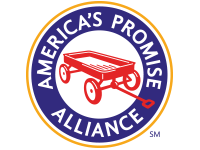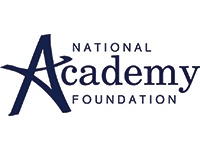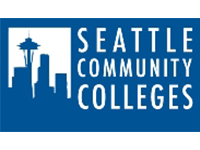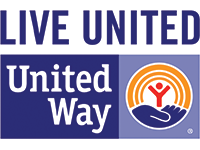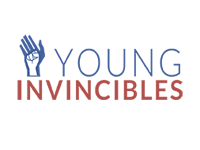Native American Poverty
•No discussion of poverty, and of the need to renew opportunity in America, can be complete without a frank consideration of the situation faced by Native Americans. With a worsening economy, the inevitable churn of holiday stories about the least fortunate, and a new Administration, now is the right time for meaningful action to address poverty in Native American communities.
The modern history of Native Americans has been marred by tragedy and injustice, and too often deprivation and suffering within Native American communities has been met with sentiment that shocks the conscience.
In 1862, the American government refused to honor treaty obligations to the Dakota Sioux Indians during a time of widespread starvation. When tribal leaders, desperate for relief, asked for food on credit because the U.S. government had failed to provide moneys owed, an associate of the local Indian agent replied, “If they are hungry, let them eat grass or their own dung.” His comment, and the crass disregard it represented, helped to spark the infamous and bloody confrontation between the tribe and the federal government now known as the Dakota War.
Although we have moved beyond wanton neglect and violence, our national response to the problem of poverty in Native American communities remains woefully inadequate.
The extent of the problem may not be well known. American Indians and Native Alaskans number 4.5 million. According to the U.S. Census Bureau, these Americans earn a median annual income of $33,627. One in every four (25.3 percent) lives in poverty and nearly a third (29.9 percent) are without health insurance coverage.
To put this in stark terms, counties on Native American reservations are among the poorest in the country and, according to the Economic Research Service at the U.S. Department of Agriculture, nearly 60 percent of all Native Americans who live outside of metropolitan areas inhabit persistently poor counties.
Contrary to popular belief, the overwhelming majority of tribes are not wealthy by virtue of gaming. This is mostly attributable to a fact which all sovereign nations have come to understand, that geography is all too often destiny.
For most tribes, their remotely placed homes and communities frequently stifle viable economic activity. This disturbing result is particularly harsh when we recognize that Native Americans witnessed their geography chosen for them by those who sought to terminate them as a people.
A major cause of poverty in Native American communities is the persistent lack of opportunity. The Economic Research Service reports that Native American communities have fewer full-time employed individuals than any other high-poverty community. Only 36 percent of males in high-poverty Native American communities have full-time, year-round employment.
On the Blackfoot Reservation in Montana, for example, the annual unemployment rate is 69 percent. The national unemployment rate at the very peak of the Great Depression was around 25 percent. That means that each year the Blackfeet people, whose aboriginal lands once comprised Glacier National Park, suffers an employment crisis nearly three times as severe as the Great Depression.
One does not need to travel to a developing nation to find extreme poverty. It is here, in America. In our own backyard.
Yet beyond these bleak statistics, there is very little discussion of the causes of Native American poverty and what to do about it. The sad truth is only a handful of policymakers give Native Americans priority on the national agenda. Few even know that November was Native American Indian Heritage Month and that, by Congressional resolution, the Friday after Thanksgiving is Native American Indian Heritage Day.
In a time for giving thanks, we too readily forget that one of the first stories behind Thanksgiving dates to 1621, when it is said to have been celebrated by the pilgrims at Plymouth and the Wampanoag tribe of Massachusetts.
In addition to their symbolic exclusion from the table, America’s indigenous populations have struggled for recognition. Most of the world’s nations have been reluctant to take positive steps to support the rights of indigenous peoples. The United Nations Permanent Forum on Indigenous Peoples set a goal early this century for adoption of the Declaration on the Rights of Indigenous Peoples. In 2007, 143 countries finally adopted the declaration. The United States – the wealthiest country in the world – was not one of them.
Expanding formal rights is important, but we also need better federal performance on these issues. The Government Accountability Office (GAO) has leveled a number of criticisms at the agencies responsible for federal Native American policy, including “long-standing financial and programmatic deficiencies” in the Interior Department’s American Indian programs. A 2006 GAO report also found that the Office of the Special Trustee for American Indians has failed to implement several key initiatives specified by the American Indian Trust Fund Management Reform Act of 1994, including establishing an actual timetable for completing its mission.
The government should also take more aggressive action on providing essential services and the necessary tools for effective self-governance to Native American communities. Congress has failed to reauthorize the Indian Health Care Improvement Act since 1992. Initially passed in 1976, the Indian Health Care Improvement Act was designed to bring the waning health of Native American communities up to the standard enjoyed by all Americans.
Unfortunately, current inaction on this issue constitutes a grave travesty. Health systems in many Native American communities are in serious need of updating and improvement. Reauthorizing this legislation will improve disease screening in Native American communities, encourage health enrollment in existing federal programs, provide better investment in Native American health professionals, and ensure funding in order to modernize facilities in Native American communities.
If providing better health care to Native Americans during a time of Wall Street bailouts seems too costly, we should recognize that we currently spend 30 percent more per capita on health care in American prisons than on Native Americans, whose ancestors aided the Pilgrims, fed the soldiers freezing in Valley Forge, helped Lewis and Clark explore our nation, and proudly hoisted the flag on Iwo Jima. In fact, Native Americans most recently served their country by playing the first and leading role in exposing one of the largest congressional corruption scandals in history: the Jack Abramoff scandal.
The truth is that health care is merely one example of the way we consistently deprive Native American communities of the services they desperately need. A 2003 study by the U.S. Commission on Civil Rights found that, per capita, Native Americans receive disproportionately lower funding than the general population for federally administered services and programs. This means that for every essential service our government agrees to provide for its citizens – including basic law enforcement, education, and infrastructure – Native Americans get less than any other segment of society.
The time for action is long past due. Native Americans were the very last to be granted the right to vote, and were therefore too long treated as second-class citizens. Now there are those who seek to treat Native American governments as second-class sovereigns. They seek to accomplish this by not availing them of the same tools for self-reliance and recognition afforded to state and local governments.
The issue of poverty is an integral first step. Poverty is both the cause and the consequence of all the ills visited upon Native Americans. Failure to address poverty causes deprivation and hardship in these communities today, and robs the next generation of any opportunity to succeed and thrive tomorrow.
The invisibility, silence, and neglect must end. As President-elect Barack Obama ascends to the White House, now is the significant moment to address the many problems Native Americans endure, including systemic poverty.
Barack Obama’s election symbolizes America’s progress in healing the racial wounds that scar our history. A new commitment to Native Americans will continue that process. His pledge to reduce poverty in America should extend to the Native American communities that feel poverty most acutely, and that have been relegated to the shadows of our society for far too long.
Advocates, legislators and the new president must put Native Americans on the national agenda.Including Native Americans in our vision of a better America is an indispensable part of the “change we need.”
Tom Rodgers is the president of Carlyle Consulting of Alexandria, Virginia. A Blackfoot tribal member, he advocates on behalf of Native American tribal governments and their people. He was previously a congressional staffer for Senator Max Baucus.

